
Fundamentals
The phrase “Coil Growth” refers to the journey of hair as it emerges from the scalp with a distinct, often tightly spiraled or spring-like formation. This concept extends beyond mere linear measurement; it encompasses the fundamental biomechanical characteristics of naturally textured hair, particularly those found in individuals of Black and mixed-race heritage. At its simplest, it describes the way a strand of hair, instead of lying straight or forming gentle waves, develops a definitive curl pattern, winding around itself as it lengthens. This characteristic formation is visible from the very root, distinguishing it from hair that might only curl or wave later along its shaft due to external factors.
For those new to the discourse of textured hair, understanding Coil Growth begins with recognizing its visible form ❉ the springy, often compact spirals that characterize highly textured hair. This intrinsic coiling is a defining feature, influencing everything from how light reflects off the strand to its inherent strength and how it behaves when wet or dry. The immediate manifestation of this coiling from the follicular base is central to its basic definition, signifying an inherent property rather than an acquired style.

The Architecture of Coil Formation
At the elemental level, Coil Growth is a consequence of the hair follicle’s shape. Unlike straight hair, which emerges from a round follicle, or wavy hair from an oval one, coily hair grows from a follicle that is distinctly flat or ribbon-like in cross-section. This unique follicular structure dictates the hair strand’s elliptical shape, causing it to curl as it exits the scalp.
The greater the flatness of the follicle, the tighter the resulting coil. This architectural blueprint, set at the very inception of the hair strand, directs its growth into spirals.
The inherent curvature of the hair strand itself, guided by the follicular design, leads to a specific arrangement of keratin proteins within the hair fiber. Keratin, the primary protein component of hair, contains amino acids with sulfur atoms. These sulfur atoms can form strong chemical linkages called disulfide bonds.
In coiled hair, the particular arrangement of these keratin chains, influenced by the curved follicle, promotes the formation of numerous disulfide bonds that pull the hair back into its coiled shape. This biochemical architecture is a testament to the sophistication of natural hair structures.
The foundational understanding of Coil Growth rests upon recognizing the intrinsic, spiraled formation of textured hair as dictated by the unique structure of its follicle.

Coil Growth in Everyday Language ❉ Beyond the Strand
While the biological underpinnings are fundamental, the term Coil Growth also possesses a wider meaning in communal dialogue, particularly within Black and mixed-race communities. It speaks to the ongoing process of embracing one’s natural hair texture, often after a period of altering it with chemical straighteners or heat. In this context, Coil Growth represents the visible return of one’s inherent hair pattern, a re-acquaintance with an ancestral characteristic. It signifies a personal journey of acceptance and reconnection, where each new centimeter of coily hair from the scalp marks a step further into self-affirmation.
This daily emergence of natural texture can be a profound visual reminder of heritage, a living testament to resilience. It is a slow, steady revelation of what has always been there, often previously hidden or suppressed. For individuals navigating this path, the presence of Coil Growth symbolizes a departure from external beauty dictates and a return to an authentic expression of self.
The coils speak of ancestral ties and a continuity of identity across generations. It suggests not only physical growth but also personal development, an ongoing process of discovery and affirmation of one’s inherent beauty.
- Follicle Shape ❉ A flat or ribbon-like follicle shape directly influences the tight, spiraled form of coiled hair.
- Keratin Arrangement ❉ The specific organization of keratin proteins and increased disulfide bonds within the hair fiber contributes to its inherent curl.
- Visible Spirals ❉ Coil Growth describes the distinct, spring-like formation of hair as it emerges from the scalp, defining its texture.
- Continuous Process ❉ This refers to the ongoing appearance of natural texture, particularly for those transitioning from altered hair.
The simplicity of the phrase itself belies the depth of what it represents ❉ a biological marvel, a personal statement, and a connection to a vast cultural lineage. It is a foundational concept for anyone seeking to truly comprehend and honor textured hair.
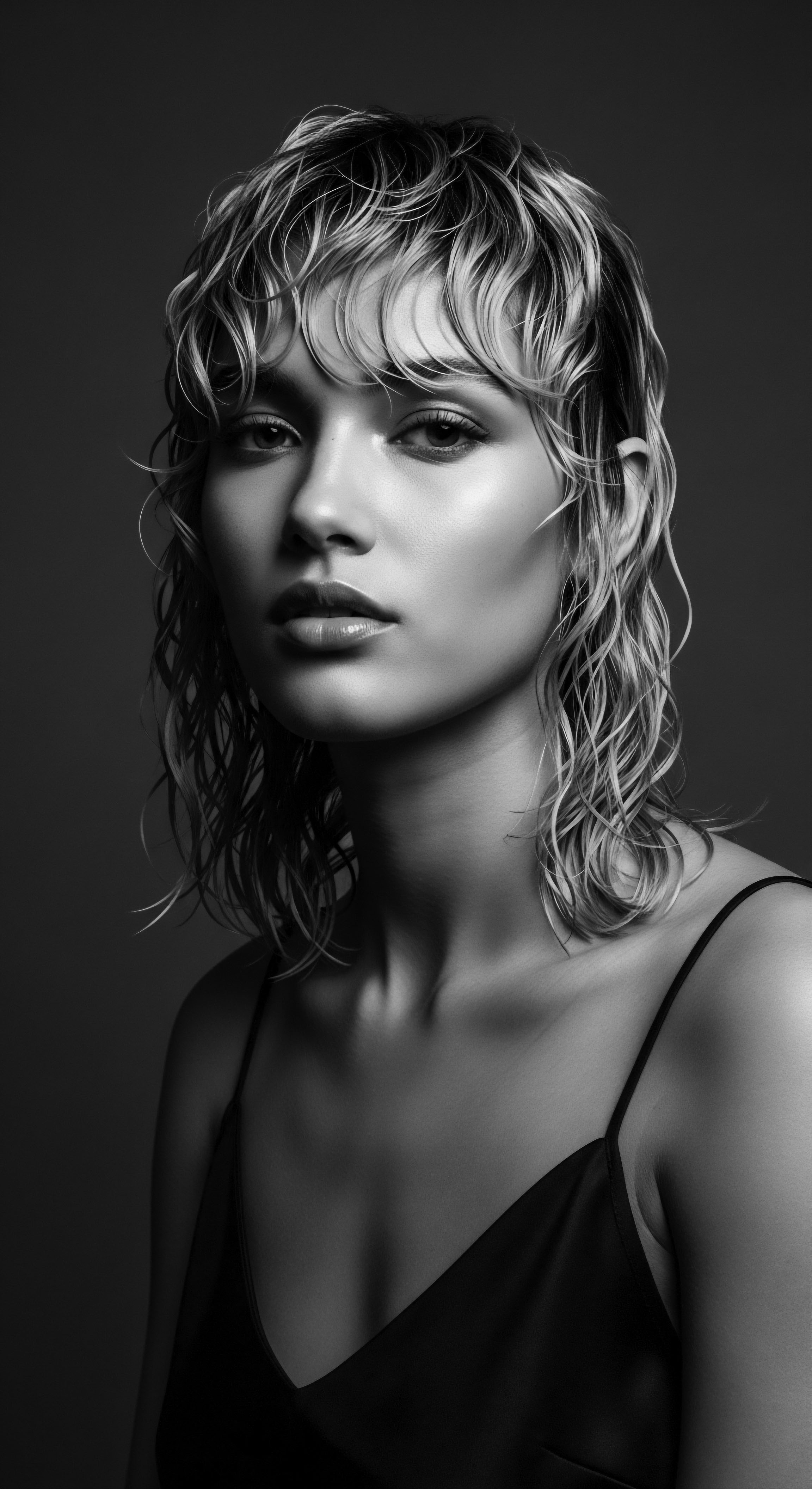
Intermediate
Moving beyond the basic explanation, Coil Growth takes on deeper layers of meaning, particularly when explored through the lens of heritage and the unique experiences of Black and mixed-race hair. Here, the concept transcends simple biology, becoming a powerful symbol of identity, cultural continuity, and personal agency. It stands as a living testament to genetic legacy, a vibrant connection to the rich and complex history of textured hair.

Coil Growth as a Heritage Marker ❉ Echoes from the Source
For individuals of African descent, Coil Growth is more than a mere physical attribute; it is an undeniable heritage marker. Each coil, from the most voluminous to the most compact, carries genetic information passed down through generations, linking individuals directly to their ancestral lands and traditions. This inheritance is profoundly significant, especially considering historical attempts to erase or denigrate these very hair textures. The emergence of natural coils from the scalp signals a reaffirmation of this ancestral connection, a visible declaration of continuity despite centuries of forced displacement and cultural suppression.
The science underpinning this connection lies in the complex interplay of genes influencing hair texture. While not governed by a single gene, the degree of curl is understood to be an “additive” trait, meaning multiple gene variants contribute to the final expression of curliness. This genetic legacy, manifesting as Coil Growth, has roots deeply planted in African populations, where coiled hair types are most common. The biological blueprint for Coil Growth is, in essence, a living archive of human migration and adaptation.
Coil Growth embodies a living genetic legacy, connecting individuals of African descent directly to their ancestral heritage and affirming continuity despite historical adversities.
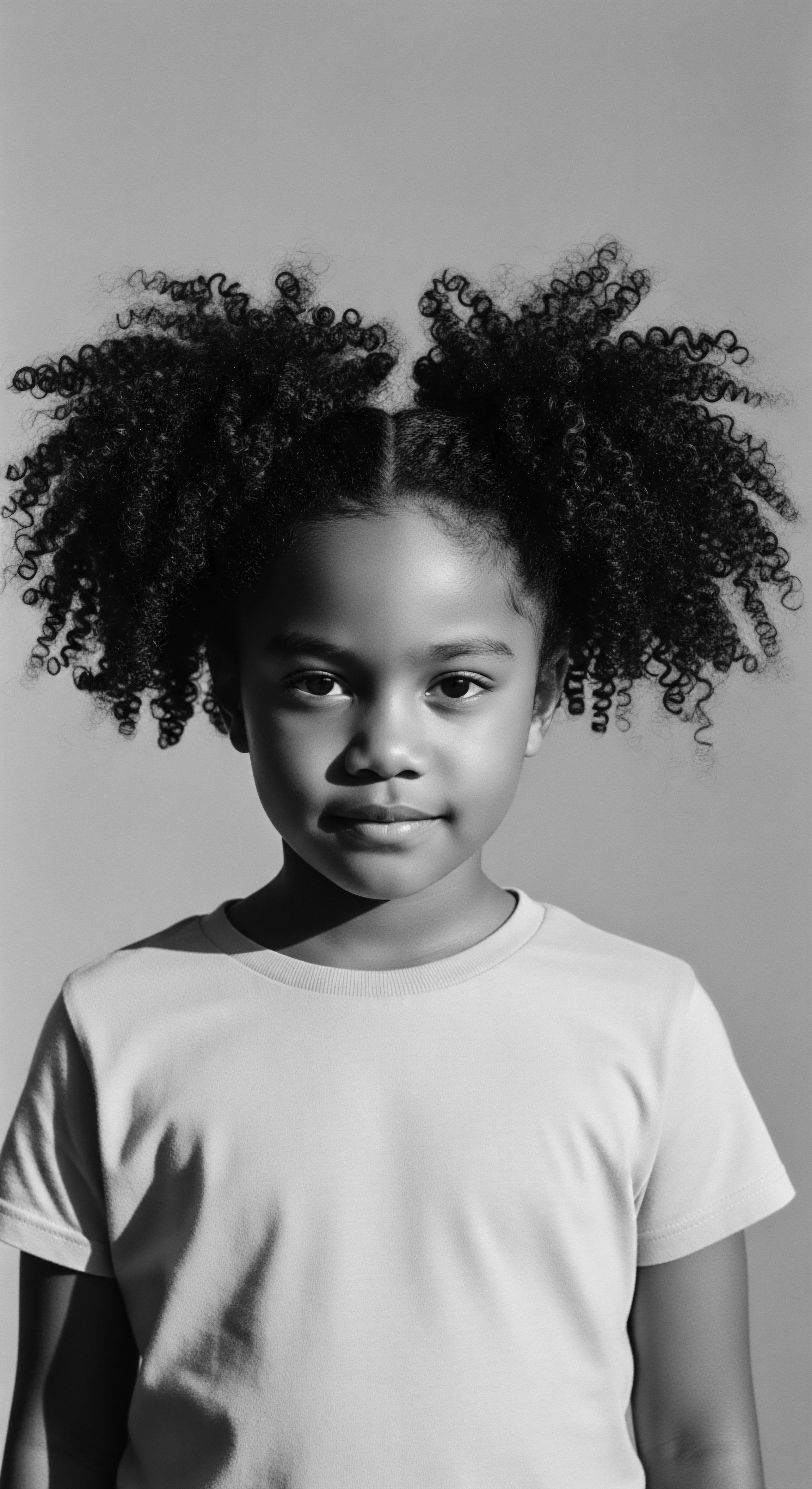
The Tender Thread ❉ Ancestral Practices and Sustaining Coils
The relationship with Coil Growth has historically shaped, and continues to shape, intricate care practices across the African diaspora. Prior to colonization and enslavement, hair care in African societies was a meticulous, communal, and spiritually significant activity. The inherent nature of coiled hair necessitated methods that prioritized moisture retention, gentle manipulation, and protective styling. These ancestral practices, often shared within families, laid the groundwork for contemporary textured hair care, embodying a profound wisdom that often precedes modern scientific understanding.
For example, the widespread use of natural emollients like shea butter, various plant oils, and herbal infusions in traditional African hair care reflects an ancient understanding of what coiled hair requires to thrive ❉ lubrication and protection from environmental stressors. These practices were not simply cosmetic; they were deeply integrated into social rituals, rites of passage, and expressions of status. The very act of caring for coily hair became a moment of bonding, a transfer of generational knowledge.
| Traditional Practice Oiling and Greasing (e.g. shea butter, palm oil) |
| Purpose in Sustaining Coil Growth Provided essential moisture, sealed cuticles, protected against breakage, enhanced natural sheen. |
| Traditional Practice Combing with Natural Tools (e.g. wide-toothed wooden combs) |
| Purpose in Sustaining Coil Growth Detangled gently, distributed natural oils, and stimulated the scalp without disrupting coils excessively. |
| Traditional Practice Protective Styling (e.g. intricate braids, twists, bantu knots) |
| Purpose in Sustaining Coil Growth Minimized manipulation, shielded hair from environmental damage, retained length, and served as cultural markers. |
| Traditional Practice These methods demonstrate a deep, inherited understanding of how to nurture the inherent structure and strength of coiled hair. |

Challenging Narratives ❉ Coil Growth and Perceptions
The journey of Coil Growth has also been fraught with historical adversity, particularly in Western contexts. During the transatlantic slave trade, the deliberate shaving of heads upon arrival in the Americas was a brutal act designed to strip enslaved Africans of their identity and cultural connection to their hair. Subsequently, Afro-textured hair was often devalued, deemed “unprofessional,” or “unclean,” leading to a pervasive societal pressure to alter its natural state.
This historical disdain contributed to the concept of “good hair,” often associating it with straighter textures and creating internal divisions within Black communities. The act of allowing Coil Growth to flourish today, therefore, stands as an act of resistance against these enduring Eurocentric beauty standards. It represents a reclamation of autonomy and a celebration of a heritage that was systematically undermined. The visibility of Coil Growth in modern society is a direct challenge to oppressive beauty ideals, reshaping collective perceptions of beauty and professionalism.
- Historical Devaluation ❉ Coily hair was often denigrated and stigmatized, particularly during periods of enslavement and colonization.
- “Good Hair” Dichotomy ❉ Societal pressures created a false hierarchy where straighter textures were preferred, fostering internal divisions.
- Reclaiming Identity ❉ The choice to wear and care for natural Coil Growth represents a powerful act of self-acceptance and cultural reclamation.
This deeper examination of Coil Growth reveals its profound layers, reaching into the biological, historical, and deeply personal aspects of identity and communal heritage. It signifies not merely a physical attribute, but a continuous story of resilience and self-determination.
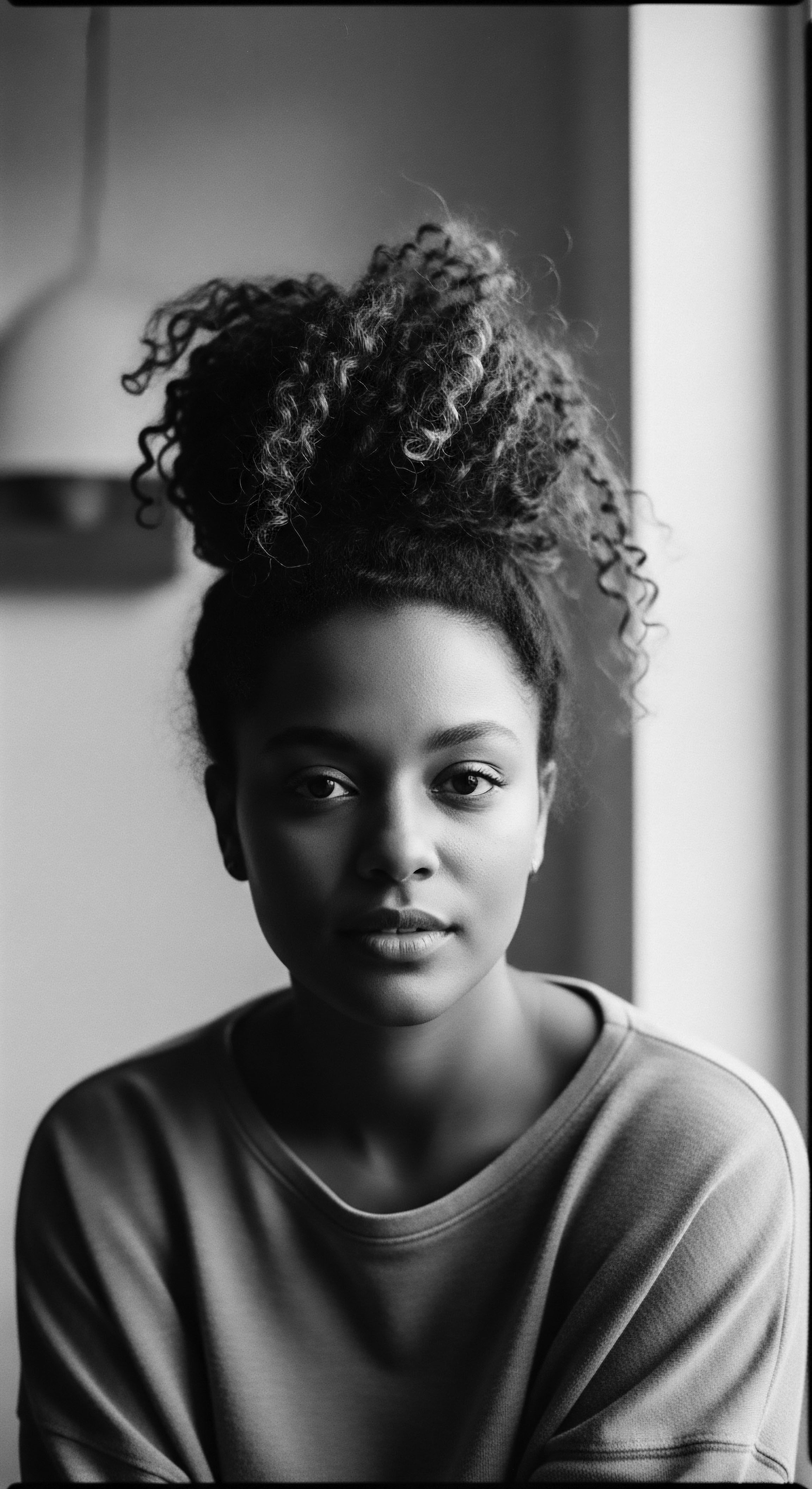
Academic
The academic understanding of “Coil Growth” delves into the intricate biomechanical, genetic, and psychosocial dimensions of textured hair, recognizing it not simply as a biological phenomenon, but as a deeply significant construct shaped by human history, culture, and societal dynamics. This expert perspective demands a rigorous, nuanced exploration, drawing upon scientific research and socio-cultural analysis to delineate its full meaning and impact. Coil Growth, at this level, becomes a complex interplay of inherited traits, molecular structures, and the profound human experiences interwoven with hair, particularly within the contexts of Black and mixed-race heritage.

The Biomechanics of Helical Hair Structures
From a biomechanical standpoint, Coil Growth is primarily governed by the elliptical cross-sectional shape of the hair follicle embedded within the scalp. Unlike the circular follicle that produces straight hair, or the oval follicle responsible for wavy patterns, the flattened, often curved architecture of the follicle yielding coiled hair dictates a non-uniform growth trajectory. This inherent asymmetry causes the keratinocytes—the cells that produce hair—to multiply and keratinize at differing rates along the perimeter of the follicle. The consequence is a hair shaft that exhibits intrinsic torsion and curvature as it elongates, resulting in the characteristic helical or spring-like morphology.
The molecular arrangement of keratin within the hair shaft further informs this coiled structure. Hair fibers are composed predominantly of alpha-keratin, a fibrous protein rich in the amino acid cysteine. The cysteine residues facilitate the formation of disulfide bonds, which are strong covalent linkages between protein chains. In coiled hair, the specific three-dimensional folding of keratin proteins, influenced by the curved follicular canal, promotes a higher concentration and more strategically placed network of these disulfide bonds, effectively locking the hair into its coiled configuration.
These disulfide bonds, alongside weaker hydrogen and salt bonds, contribute significantly to the mechanical properties and resilience of coiled hair. The more pronounced the follicular curvature, the tighter the helical twist of the hair shaft, and the more interconnected the disulfide bond network, collectively contributing to the unique properties of Coil Growth, including its elasticity and susceptibility to shrinkage.

Genetic Predisposition and Population-Specific Traits
The genetic underpinnings of Coil Growth reveal a complex polygenic inheritance, wherein numerous genes contribute synergistically to the expression of hair curl. Research indicates that hair curl is an “additive” trait, meaning the degree of curl is influenced by the cumulative effect of multiple gene variants inherited from both parents. For instance, certain single nucleotide polymorphisms (SNPs) in genes such as TCHH (Trichohyalin), EDAR, and WNT10a have been implicated in determining hair texture, with some variants showing population-specific associations.
For example, variants in the EDAR gene are more commonly associated with differences in hair thickness in Asian populations, while the TCHH gene polymorphism relates to hair texture in Northern European ancestry. However, the most tightly coiled hair, characteristic of many African populations, is the result of a diverse array of genetic influences that are still being fully mapped.
The intricate genetic mechanisms governing Coil Growth underscore its evolutionary significance, potentially offering advantages in diverse environments. For instance, tightly coiled hair might have historically provided superior thermoregulation in equatorial climates by creating a dense, insulating layer, protecting the scalp from intense solar radiation while allowing for air circulation. This adaptive perspective reframes Coil Growth not merely as an aesthetic characteristic but as a testament to human biological diversity and environmental interaction over millennia.
Coil Growth is genetically orchestrated, involving multiple genes that contribute to the unique helical structure, highlighting its adaptive potential across varied ancestral environments.
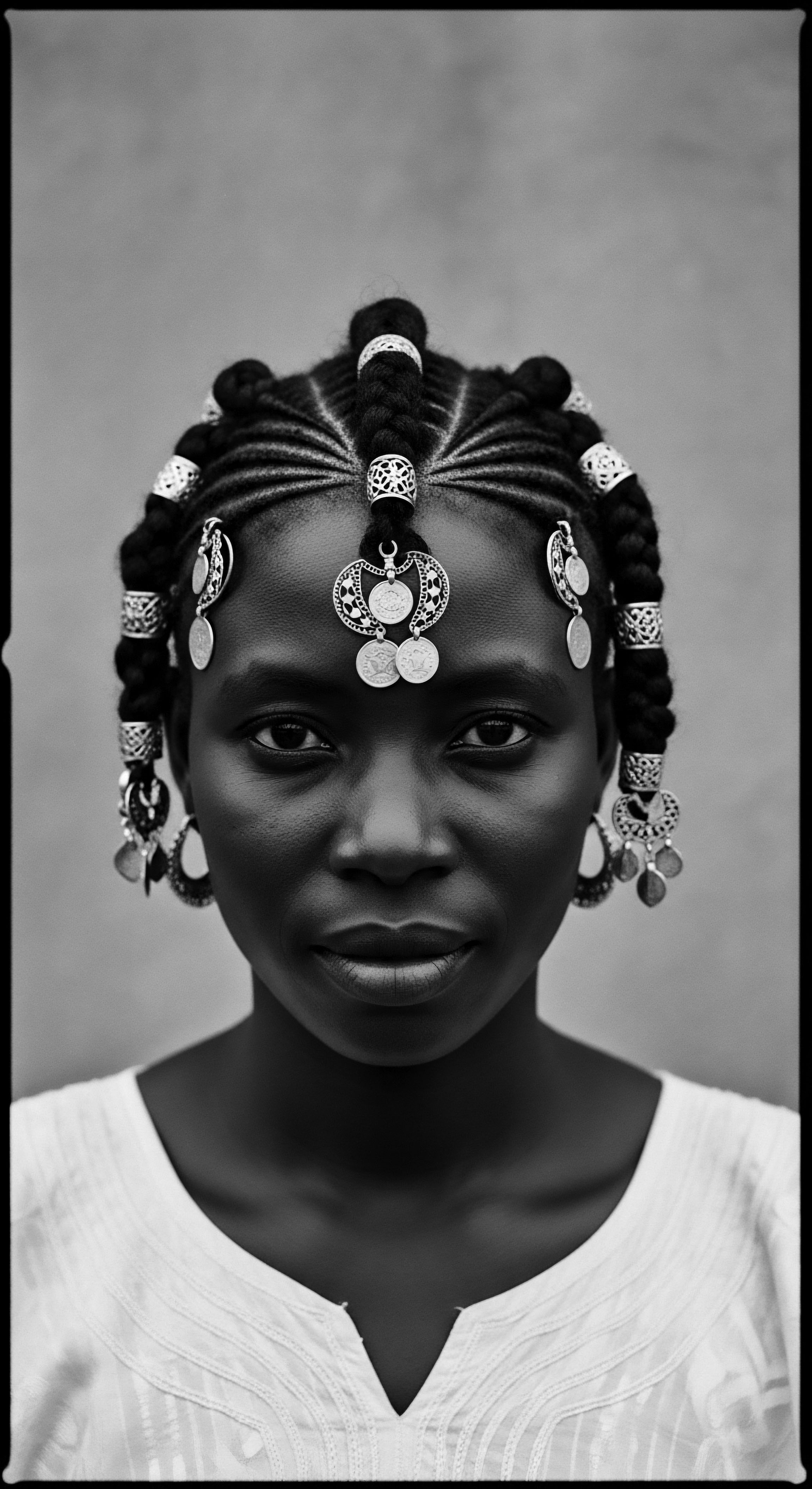
Coil Growth as a Locus of Cultural Contestation and Resilience
Beyond its biological and genetic dimensions, Coil Growth serves as a profound locus of cultural significance, identity negotiation, and historical contestation for Black and mixed-race communities globally. Historically, the visible manifestation of Coil Growth became a target during periods of enslavement and colonization, as European aesthetic standards were imposed. The forced shaving of heads of enslaved Africans upon arrival in the Americas was a deliberate, dehumanizing act aimed at erasing cultural identity and severing ancestral ties. This practice sought to dismantle the deep societal, spiritual, and familial meanings ascribed to hair in pre-colonial African societies, where elaborate hairstyles often denoted social status, age, marital status, and tribal affiliation.
The subsequent institutionalization of anti-Black hair bias, often termed ‘textureism’ or ‘hair discrimination,’ perpetuated the marginalization of Coil Growth, deeming it “unprofessional” or “unruly.” This systemic devaluation led to pervasive pressures to chemically straighten or conceal coiled textures, fostering internalized notions of “good hair” that privileged Eurocentric ideals. The pervasive impact of such discrimination is evident in contemporary society; for instance, a study revealed that 37% of Black adults have faced work-based discrimination because of their hair, with 25% being sent home from work for wearing their hair naturally. Similarly, 51% of children with Afro-textured hair have been sent home from school for reasons related to their hair. These statistics underscore the ongoing social ramifications of prejudiced perceptions rooted in the historical subjugation of coiled hair.
| Era/Period Pre-Colonial Africa |
| Dominant Perception of Coily Hair Symbol of identity, status, spirituality, community belonging. |
| Impact on Individuals/Communities Hair practices strengthened social bonds, marked rites of passage, affirmed heritage. |
| Era/Period Transatlantic Slave Trade |
| Dominant Perception of Coily Hair Target for dehumanization, perceived as "unruly" or "animalistic." |
| Impact on Individuals/Communities Forced shaving, pressure to cover hair, erasure of cultural markers, psychological trauma. |
| Era/Period Post-Slavery & Jim Crow Era |
| Dominant Perception of Coily Hair Associated with lower social standing, deemed "unprofessional" in dominant society. |
| Impact on Individuals/Communities Rise of chemical relaxers and hot combs to conform to Eurocentric standards, internal divisions within communities. |
| Era/Period Civil Rights & Black Power Movement (1960s-70s) |
| Dominant Perception of Coily Hair Symbol of pride, resistance, Black identity and political statement. |
| Impact on Individuals/Communities Resurgence of natural styles like the Afro, challenging Eurocentric norms. |
| Era/Period Modern Natural Hair Movement (2000s-Present) |
| Dominant Perception of Coily Hair Celebrated as beautiful, authentic, and a link to heritage. |
| Impact on Individuals/Communities Increased acceptance and visibility, legislative efforts (e.g. CROWN Act) to combat discrimination. |
| Era/Period The evolving perceptions of coiled hair directly reflect broader societal shifts concerning racial identity, beauty standards, and systemic discrimination. |

The Unbound Helix ❉ Coil Growth as Resistance and Reclamation
Despite centuries of attempted suppression, Coil Growth has persistently served as a powerful medium of resistance, cultural continuity, and profound self-expression. During periods of severe oppression, the inherent characteristics of coiled hair were ingeniously repurposed as tools for survival and communication. One compelling historical example is the covert use of cornrows by enslaved Africans in Colombia. In the early 17th century, under the leadership of King Benkos Biohó, women in regions like Palenque de San Basilio braided intricate patterns into their hair that functioned as secret maps and escape routes for those fleeing enslavement.
These elaborate styles, which laid flat against the scalp, concealed not only directional cues—with curved braids representing winding roads and straight ones indicating clear paths—but also small gold pieces or seeds, vital provisions for survival during treacherous journeys to freedom. The ability of tightly woven coils to securely hold these hidden items speaks directly to the physical properties of Coil Growth ❉ its strength, density, and natural adherence. This historical practice is a poignant illustration of how the very physical architecture of coiled hair, combined with profound ingenuity and ancestral knowledge, became a silent yet potent instrument of liberation. This specific historical adaptation highlights the remarkable connection between the biological reality of Coil Growth and its strategic deployment in acts of profound resistance, demonstrating its significance far beyond mere aesthetics.
- Coded Communication ❉ During enslavement, specific cornrow patterns were braided as maps to guide escapees to safety.
- Concealment of Provisions ❉ Seeds, grains, or small gold pieces were hidden within tightly coiled braids, providing sustenance for those escaping.
- Symbol of Resilience ❉ The very act of maintaining traditional styles despite oppressive conditions became a quiet but powerful act of cultural preservation.
In the contemporary era, the natural hair movement, which gained significant momentum in the 2000s, represents a modern iteration of this reclamation. This movement encourages individuals of African descent to embrace their natural coil growth, rejecting chemical alterations and Eurocentric beauty standards. It is a collective re-engagement with ancestral aesthetics and a powerful expression of self-acceptance and pride. Through social media platforms and community gatherings, the sharing of knowledge about Coil Growth care, styling, and appreciation has fostered a global network of solidarity, reaffirming that the coil is not a challenge to be tamed, but a legacy to be honored.
This academic lens reveals Coil Growth as a multifaceted concept ❉ a product of sophisticated biological engineering, a marker of genetic heritage, and a dynamic symbol steeped in narratives of oppression, resistance, and enduring cultural pride. Understanding its complexities requires an interdisciplinary approach, acknowledging the scientific, historical, and deeply human dimensions that define its meaning.
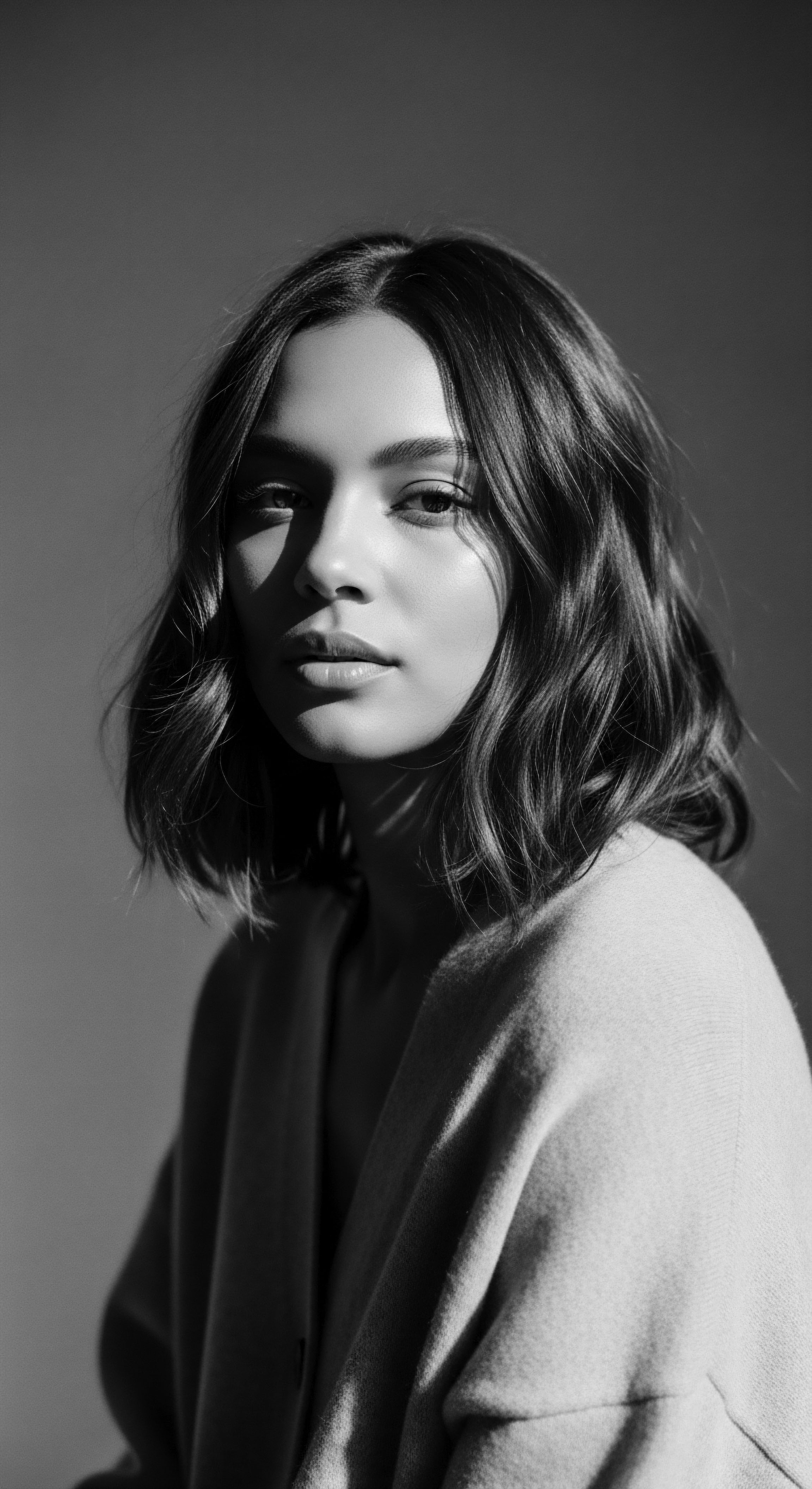
Reflection on the Heritage of Coil Growth
The journey of understanding Coil Growth, from its microscopic helical formations to its monumental impact on identity, brings us to a profound appreciation for textured hair. This exploration is not simply an academic exercise; it is a soulful meditation on the enduring heritage and evolving significance of a unique biological gift. The ‘Soul of a Strand’ ethos, which anchors our perspective, recognizes that each curl, kink, and coil carries the whispers of ancestors, the resilience of generations, and the promise of a vibrant future.
Coil Growth, in its very essence, is a continuous unfolding of heritage. It speaks of ancient traditions, where hair care was a sacred ritual, a communal gathering, and a means of communicating identity long before written words became commonplace. We see in its persistent vitality a testament to the wisdom of those who came before us—individuals who understood how to nurture these unique textures with natural ingredients and intricate techniques, transforming what was deemed a challenge by colonizers into a profound art form and even a tool for survival. These practices, passed down through the tender touch of hands, represent an unbroken lineage of care, resilience, and beauty.
The resilience of Coil Growth also reminds us of the profound struggles faced by Black and mixed-race communities. The history of hair discrimination is a harsh reminder of societal pressures, yet the unwavering return to natural textures stands as a powerful act of defiance and reclamation. To wear one’s Coil Growth openly and with pride today is to honor the sacrifices of those who endured immense pressure to conform.
It is a quiet revolution, a personal act of liberation that resonates with collective memory. This embrace of authentic texture is a declaration that our inherent beauty is not up for negotiation; it is a birthright, a crown woven from history and resilience.
As we look to the future, the understanding of Coil Growth continues to deepen. Scientific advancements illuminate the biological marvels within each strand, validating the empirical wisdom of ancestral practices. This synergy between ancient knowledge and modern science offers new pathways for holistic hair wellness, allowing us to care for coiled hair with both reverence and informed precision.
The conversation surrounding Coil Growth, therefore, is not static; it is a living, breathing dialogue that evolves with each generation, deepening our connection to identity, community, and the timeless legacy of textured hair. It compels us to see hair not as mere fibers, but as living expressions of identity, continuously blossoming in diverse forms across the diaspora, each spiral a story, each strand a celebration of an unbound heritage.
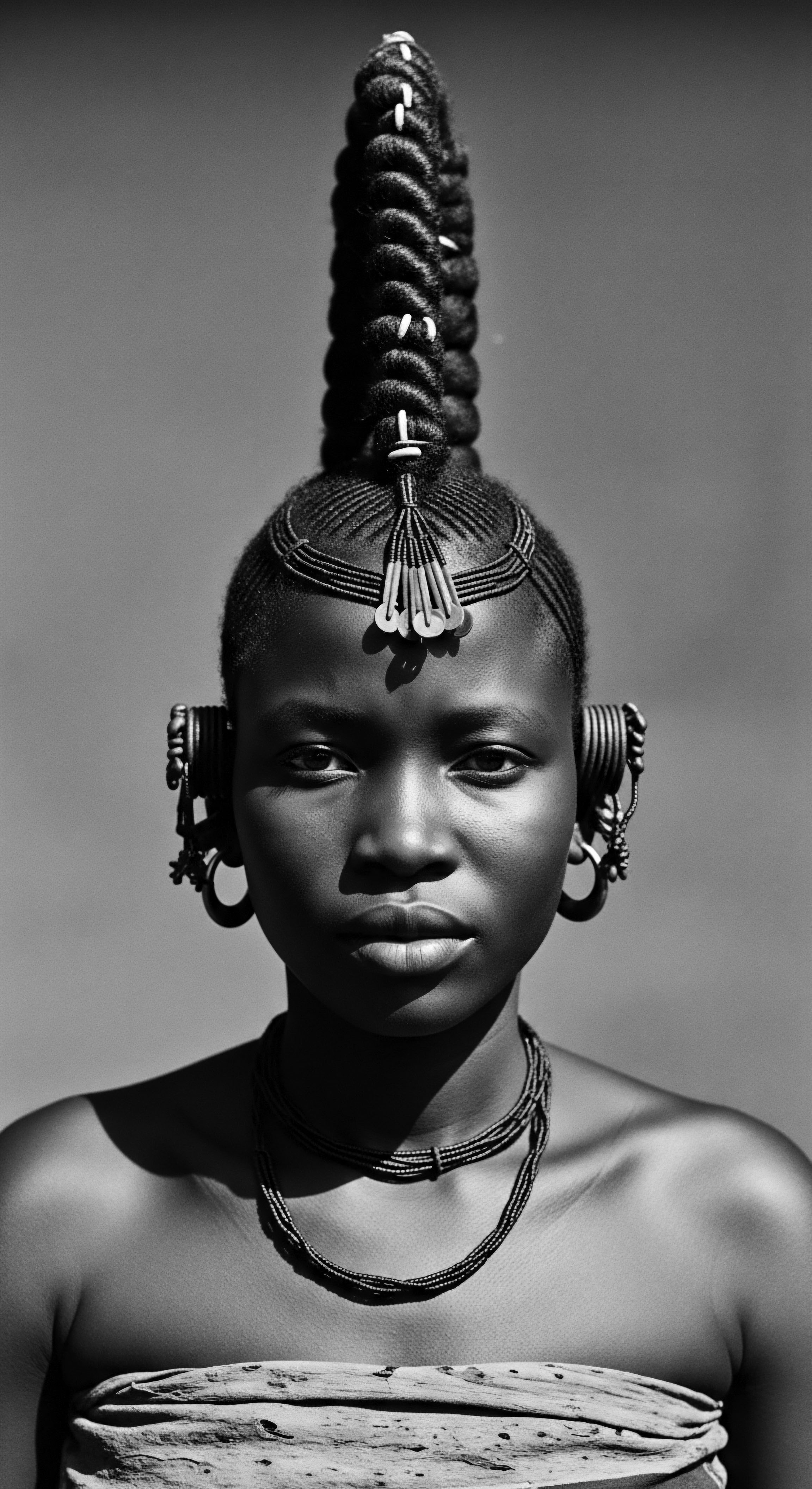
References
- Byrd, A. L. & Tharps, L. D. (2001). Hair Story ❉ Untangling the Roots of Black Hair in America. St. Martin’s Press.
- Diedrich, K. (2007). The Natural Hair Handbook ❉ Everything You Need to Know About Natural Hair Care. CreateSpace Independent Publishing Platform.
- Jablonski, N. G. (2012). Living Color ❉ The Biological and Social Meaning of Skin Color. University of California Press.
- Patton, T. O. (2006). “Hey Girl, Am I More Than My Hair?” Communication Quarterly, 54(4), 517-526.
- Robbins, C. R. (2012). Chemical and Physical Behavior of Human Hair. Springer.
- Smalls, Y. (2019). Hair Care for the Culture ❉ The Science of Black Hair. Self-Published.
- Speller, D. (2020). Natural Hair for Dummies. For Dummies.
- Sweetman, R. (2018). The Psychology of Black Hair. Routledge.
- Walters, L. L. (2001). African American Hairstyles (African-American Celebrations and Traditions). Chelsea House Publishers.
- Westgate, G. E. Botchkareva, N. V. & Botchkarev, V. A. (2017). The Biology of Hair. CRC Press.
